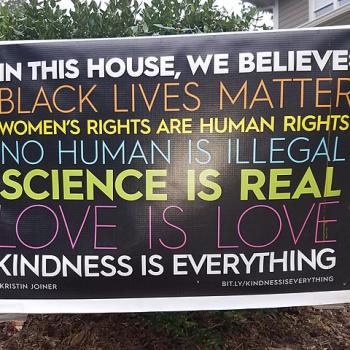The larger the group, the less the individual involvement. That’s a long-established finding of social science. So what does that mean for very large churches? New research has shown that those who attend megachurches are less involved in their congregation than those who attend smaller churches. That may be obvious, but the researcher then raises a disturbing question: Has the rise of the megachurch thus contributed to the overall decline of religion in the United States?
I am not attacking big churches. It’s natural for a congregation to want to become as big as possible, and many large congregations are quite orthodox. But churches need to face up to this data. Are there other unintended consequences of megachurches? Is there a way to counter them? How might a big congregation increase individual involvement? Or should big churches split into smaller congregations, once they reach a particular size?
From Michael Gryboski, Megachurches Have Less Involved Members Than Smaller Congregations, Study Finds:
Members of large churches are less involved than those of smaller congregations, according to a recent study from Duke University.
Research published last week by the American Sociological Association’s journal Socius found, according to its abstract, “a negative relationship between size and the probability of attendance for Conservative, Mainline, and black Protestants and for Catholics in parishes larger than 500 attenders.”
“The addition of control variables does not change these patterns. These results support the theory that group cohesion lies at the heart of the size-participation relationship in churches,” continued the abstract.
“With the rapid growth of megachurches in the United States, a negative relationship between size and frequency of attendance could serve to accelerate aggregate declines in attendance.
The research was headed by David Eagle, a researcher at Duke’s Center for Health Policy and Inequalities Research based in Durham, North Carolina.
In an interview with The Christian Post, Eagle explained that he became interested in this topic while serving as a pastor in Canada.
“I also pastored at a time when leaders in my denomination really pushed church growth and argued that building big churches had the most promise of attracting non-Christians,” said Eagle.
“I was skeptical of this approach, and began to think that an emphasis on growth could lead to unintended consequences — things like creating a less involved membership.”
Eagle also told CP that he “wasn’t all that surprised” by the findings, noting that German sociologist Georg Simmel (1858-1918) “argued that big groups create a less involved membership.”
“But what I found really interesting was that the rapid increase in the number of really big churches might actually tie into what many have observed — the declining importance of religion and religious involvement in the US,” continued Eagle.
“I wondered if megachurches are a reflection of that — they provide places where people can go less frequently, whose comings and goings may not be noticed and where more staff means that they don’t need to take on as major a volunteer role as they would in a smaller church.”
[Keep reading. . .]
















